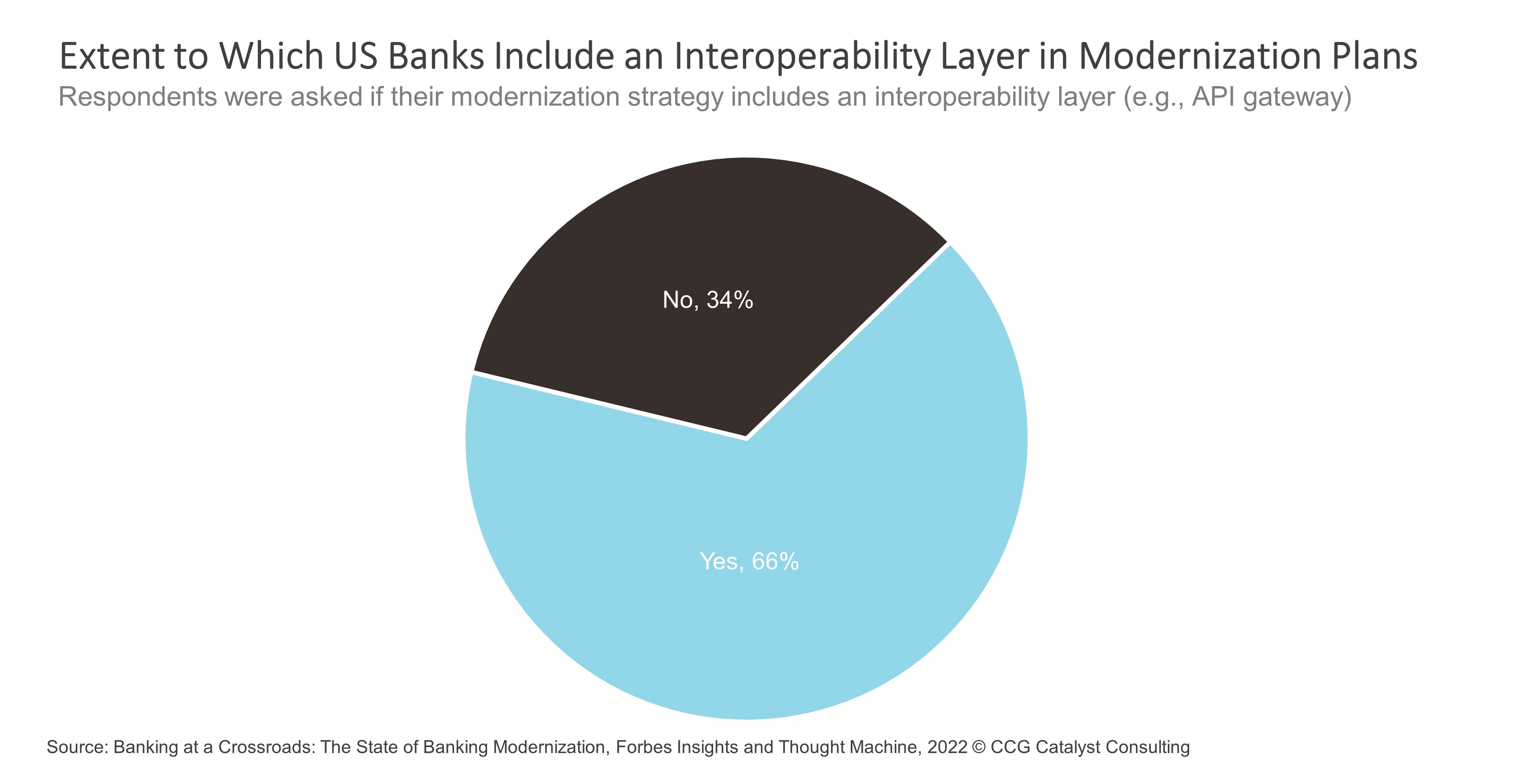Interoperability Is Key to Modernization Plans
May 4, 2023
By: Kate Drew
Banks and API Adoption
Embarking on technology modernization is an understood imperative among US banks. However, there is less agreement about what that actually means, with many different strategies and approaches to modernization up for discussion. One key component, though, that a majority of banks seem to agree on is the need for interoperability — in fact, according to a recent report titled Banking at a Crossroads: The State of Banking Modernization by Forbes Insights and Thought Machine, 66% of US banking leaders surveyed said their modernization strategy includes an interoperability layer or application programming interface (API) gateway.
This is extremely important, because it goes back to something we talk about over and over again — the need for flexible infrastructure that can support things you’ve not yet considered. And the most efficient way to achieve such flexibility is by making sure your infrastructure is fully API enabled — that could mean creating an interoperability layer that sits above the core, or it could mean leveraging a fully API enabled core system to begin with that has an orchestration layer built in. Either way, the goal should be to make it easy for different systems to talk to each other and share data, no matter who built them or how. In a world where more and more institutions are pursuing best of breed strategies that combine purpose-built solutions from different corners of the market, this is only going to become more critical.
Promisingly, it appears that most bank executives realize this. It is somewhat worrying, however, that a third of respondents said they have not included an interoperability layer or API gateway in their modernization plans. That is a pretty large chunk of institutions who have yet to fully understand the importance of flexibility in driving agility. And agility hasn’t been optional for a very long time. So, if you are at a bank that has a plan for API enablement, you’re at least on the right track (though there are a lot of different elements that go into doing this well), but if you’re not, it may be time to start sounding the alarm bells. Interoperability is not a nice-to-have when it comes to modernization efforts, not even close. We’ve got to move the needle all the way on this one.







